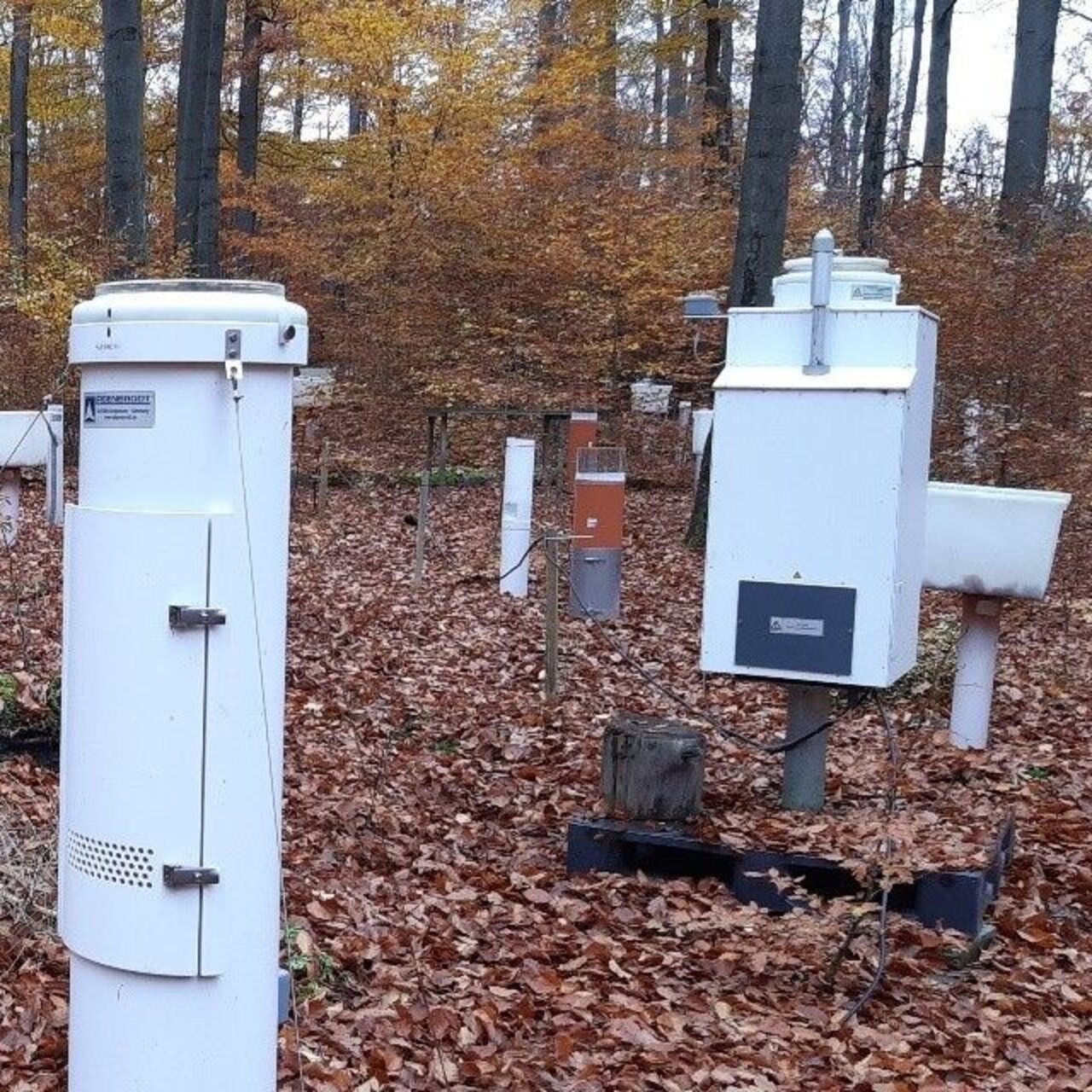Project
Mercury deposition in forest ecosystems

Development and testing of methods to measure wet mercury deposition under the forest canopy
Atmospheric input of mercury (Hg) causes long-term pressure on ecosystems. While the paths of mercury in wetlands have been extensively studied, they are poorly understood for forest ecosystems (Xun Wang et al., 2017). Nevertheless, the accumulation rate in soil-productive forests is about 2.5% higher than in the soils of low-vegetation areas; this can easily be explained by the combing effect of (evergreen) trees and is also known for other pollutants.
Background and Objective
Mercury (Hg) is one of the priority substances in the Geneva Air Pollution Control Convention (CLRTAP). In the Heavy Metals Protocol (Aarhus 1998, updated 2012) regulations for reducing the emission of cadmium (Cd), lead (Pb) and Hg into the atmosphere were agreed. The risk assessment with the methods developed within the CLRTAP for calculating and checking critical loads for Hg and their exceedances shows a widespread exceedance of the ecological load limits for terrestrial ecosystems, in particular forests, for Germany (and Europe). In the National Strategy on Biological Diversity, Germany has set itself the target of achieving by 2020 the Critical Loads u. a. for heavy metals. This goal is unlikely to be achieved.
The project aims to bridge existing knowledge gaps regarding atmospheric inputs of mercury and their distribution in forest ecosystems. It is intended to support the development of a methodology to measure wet mercury deposition under the canopy of forests, which nevertheless provides reliable, reproducible results when using the simplest possible technical means. This creates the prerequisites for recording the actual entry in forest soils, which up to now can only be quantified with great uncertainty with the help of existing models (e.g. land use-dependent Hg deposition calculation with the EMEP model). The measurement results should be evaluated together with measured Hg concentrations in leaves, needles and soils (from the intensive forest environmental monitoring) in order to obtain information on Hg flows in, and possibly also for reemission from forest ecosystems.
Thünen-Contact

Involved external Thünen-Partners
- Nordwestdeutsche Forstliche Versuchsanstalt (NW-FVA)
(Göttingen, Hann. Münden, Deutschland)
Funding Body
-
Umweltbundesamt (UBA)
(national, öffentlich)
Duration
6.2018 - 7.2022
More Information
Project status:
finished
Publications
- 0
König N, Krinninger M, Geppert F, Sanders TGM (2024) Messung der nassen Quecksilberdeposition unter dem Kronendach von Wäldern : Vergleich von drei Standorten mit unterschiedlicher Belastung ; Abschlussbericht [online]. Dessau-Roßlau: Umweltbundesamt, 117 p, Texte UBA 135/2024, zu finden in <https://www.umweltbundesamt.de/publikationen/messung-der-nassen-quecksilberdeposition-unter-dem> [zitiert am 30.09.2024]
- 1
König N, Krinninger M, Schad T, Sanders TGM, Geppert F, Holzhausen M (2021) Entwicklung und Test von Methoden zur Messung der nassen Quecksilberdeposition unter dem Kronendach von Wäldern [online]. Dessau: Umweltbundesamt, 137 p, Texte UBA 157, zu finden in <https://www.umweltbundesamt.de/publikationen/entwicklung-test-von-methoden-zur-messung-der> [zitiert am 07.12.2021]
- 2
Geppert F, Schad T, König N, Krinninger M, Holzhausen M, Sanders TGM, Schütze G (2021) Methoden zur Messung der nassen Quecksilberdeposition unter dem Kronendach von Wäldern. Eberswalde: Thünen-Institut für Waldökosysteme, 2 p, Project Brief Thünen Inst 2021/24, DOI:10.3220/PB1628688672000
- 3
Geppert F, Schad T, König N, Krinninger M, Holzhausen M, Sanders TGM, Schütze G (2021) Techniques for the measurement of wet mercury depositions under forest canopy. Eberswalde: Thünen Institute of Forest Ecosystems, 2 p, Project Brief Thünen Inst 2021/24a, DOI:10.3220/PB1629705718000
Contact

- Phone
- +49 3334 3820 339
- tanja.sanders@thuenen.de
Head of Ecology and Forest Dynamics, Contact person Intensive Forest Monitoring
